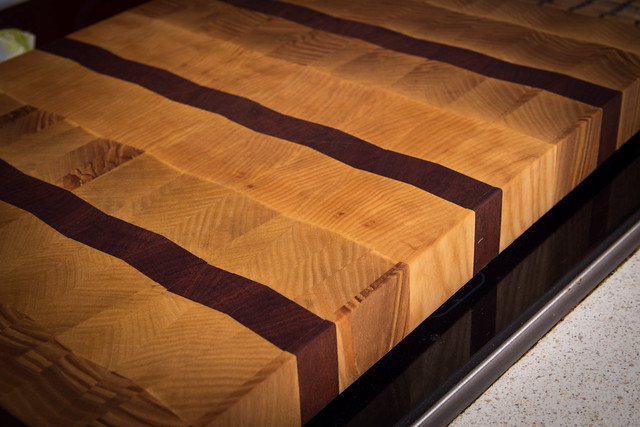icanhaschzbrgr
ill-Known Member
I had this question for quite some time and decided that It may have interest to some KKF users, so I'm asking here.
What board thickness would you consider optimal in home environment?
I understand optimal thickness is the minimum possible thickness that would allow board to keep its shape under normal daily home usage. Does optimal thickness depends on wood type?
Here's the board that's being used in our kitchen daily:

390x290x35mm made from Ash and Sapele if I'm not mistaken. I love everything about this board except its weight. Almost 3kg. While it's not a problem for me, my wife complains way too often when she needs to move this board around kitchen. And in the smaller kitchen like ours, it's inevitably a need to move board around while cooking.
So my ultimate question here: is it possible to make thinner board that would still behave nicely in home environment? I do understand that technically it's possible to make even few millimeters thick board, but I believe it would break and/or warp immediately.
But assuming there would be no intentional abuse and I oil board regularly, what the minimum thickness?
What board thickness would you consider optimal in home environment?
I understand optimal thickness is the minimum possible thickness that would allow board to keep its shape under normal daily home usage. Does optimal thickness depends on wood type?
Here's the board that's being used in our kitchen daily:

390x290x35mm made from Ash and Sapele if I'm not mistaken. I love everything about this board except its weight. Almost 3kg. While it's not a problem for me, my wife complains way too often when she needs to move this board around kitchen. And in the smaller kitchen like ours, it's inevitably a need to move board around while cooking.
So my ultimate question here: is it possible to make thinner board that would still behave nicely in home environment? I do understand that technically it's possible to make even few millimeters thick board, but I believe it would break and/or warp immediately.
But assuming there would be no intentional abuse and I oil board regularly, what the minimum thickness?




